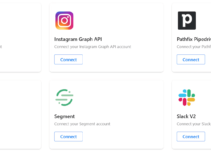Building a software company is hard work.
- You build your software
- reach Product-Market fit
- hire employees
...... all the while trying to grow your software platform to include all the bells and whistles your customers expect from your platform.
One of the key features that is always on top of your list is Integrations.
Customers love your product and the data they get from you, but they also want to be able to work with data they get from other software solution that they already use.
So, the question is – should you add those integrations natively or do you just add one integration to Zapier and let your customers work outside your software?
As an integration and automation platform, we at Pathfix absolutely love Zapier (hey, we built our Automation platform that directly competes with them, so they are definitely doing something right that we absolutely love!).
But the question remains, should you send your customers to a Zapier to figure out their automations?
Is Zapier the right solution for you?

We spoke to hundreds of founders, developers, nocode makers and found that the number one reason they think of adding Zapier to their integration is convenience. The fact that you can add 1 integration that gives your customers access to 1500+ app is unmatched.
While true, there is a huge downside to this thinking. You are essentially doing one of these 3 things:
- Ownership: You are transferring the responsibility and ownership of integrations to your customer (read: hey user, there is another software that can do this for you, go there and figure out what you want).
- Time spent on your app: You have essentially sent your customers outside your platform (read: they now spend less time on your platform)
- Cost: You are asking your users to incur additional cost, the cost of integrating into your app by subscribing to a 3rdparty integrator.
This doesn’t sound right, does it?
Successful companies grow and maintain that growth by keeping their customers within their platform.
The more time and dependency they build with your platform, the longer they stay (look at that, you solved a potential retention issue as well!).
Should you still integrate with Zapier?
Absolutely!
Zapier is a powerful platform that gives your customers unmatched flexibility and connectivity.
However, it should not be a permanent/only integration connection. Here’s when you should consider it:
- You are an early startup with no devs to spare and a deadline (that possibly ended yesterday)
- You are looking for a short term quick fix (keyword: short term) to your integration needs
Lets face it, you are not going to build integrations to all hundreds of platforms, include all possible scenarios.
But, does this mean you only add 1 integration and move on? Absolutely not!
You cannot transfer ownership and costs over to your customers and call it a day. You need to start thinking working on your integration strategy.
So, what does it take for you to add native integrations to your platform?
Adding Integrations To Your Platform
Any user facing integration starts with data access. This is solved via OAuth.
Simply put, oauth is an open authorization framework built to enable secure access od data from one provider to another.
Here is how a typical oauth process works (don’t worry about memorizing it):

Now I am not going to tell you building oauth an easy process (well, before Pathfix at least). It’s not.
Hell, we have built our whole business on oauth and the simplification of the oauth process.
Building out an oauth framework is time consuming, costs a lot and requires a certain skill set (apart from the fact that most devs absolutely hate working on it).
But since we have built the Pathfix OAuth Platform to handle oauth, you can save hours of dev time and just skip to the front of the line (yes, we handle all of the above complexity).
Essentially, you can get connected to multiple apps and have your Integrations section look something like this:

Then it all comes down to the nuances of your integrations:
- What data do you want to share
- What data do you want to get
- Is it read only or do you want to write to other apps
And so on…
Apart from the UI, the rest can get done by building/leveraging automations.
Got APIs ready to connect?
If you have APIs that are ready to consume, you can easily build out your data automation using Pathfix Automation. You simply run the oauth for your users using the Pathfix OAuth platform and trigger user specific automations in Pathfix Automation.
No APIs?
If you are serious about integrations, you need to be integration ready. This means building out a few basic APIs (even if its not public). This will allow you to be integration ready and start offering integrations to your users.
Build out your Automation
Add user facing integrations quickly with the Pathfix Automation platform. Trigger an automation flow by calling an Endpoint or by Event (scheduled).
Since OAuth and Automation are both tools by Pathfix, building your integrations are super easy!

Conclusion
Integrations are crucial. While there are workflow and integration platforms that your users can always turn to, you still need to think Integration.
Software platforms have seen tremendous growth by simply implementing an integration strategy.
If you are ready to build out your integrations, check out the Pathfix platforms for your specific needs:
- OAuth platform: solve your oauth connectivity
- Automation platform: Build out your business automation with APIs
Need help with your integrations? Reach out to us and we will be happy to set this up for you.



